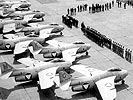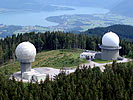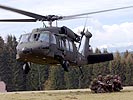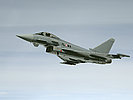The Austrian Air Force - In the Past and Today
Shortly before declaring neutrality on October 26, 1955, Austria formed an air arm which was tasked with defending Austria's air space. Basic flying training for the Kommando Luftstreitkräfte (Austria's aviation division and an element of the new "Federal Army") began in December 1955 using Yak-11 Moose and Yak-18 Max aircraft which had been abandoned, still in their crates, by retreating Soviet troops. Twenty-two Cessna L-19A Bird Dog observation and liaison aircraft were subsequently purchased under the Mutual Aid Plan for a nominal one Dollar from US forces based in Austria.
Today, the Luftstreitkräfte have three main tasks:
- maintaining the sovereignty of its air space,
- providing reconnaissance, transport, liaison and combat support for its ground forces,
- acting in an emergency relief capacity both at home and abroad.
The latter ranges from search and rescue (SAR) missions after avalanches, earthquakes and floods to fire-fighting duties.
Goldhaube
Austria's air defence system Goldhaube (Golden Hat), has been operational since 1988, at about the same time as the introduction into service of the Saab Draken. It consists of fixed radar sites and mobile radar stations. Two Saab 105s or two Eurofighter jets are permanently held on quick reaction alert to intercept unidentified aircraft approaching the border.
In June 1991, during the crisis in Slovenia, several airspace violations were made by Yugoslav jets. On one occasion, a Yugoslav fighter even overflew the city of Graz, which is 50km (31 miles) from the border. Following this incident, the Bundesheer was put on alert for several weeks, with anti-aircraft artillery (AAA) units positioned around the air base near Graz. There was another incident in October 1991, when two Saab 105s intercepted a JRV MiG-21 flown by a deserting Croatian pilot and accompanied him to the airport of Klagenfurt, where he landed. However, most of the unidentified traffic transpires to be airliners which have not adhered to their assigned track or time over checkpoints.
Luftunterstützungsgeschwader
The Luftunterstützungsgeschwader (Air Support Wing) consists of three staffel (squadrons); the first two being equipped with S-70 "Black Hawk" and "Alouette" III transport helicopters.
Being the fixed wing transport squadron, the 3rd staffel is equipped with Pilatus PC-6 "Turbo Porters". The Turbo Porters have a variety of duties, including transport, Search and Rescue, fire-fighting (with an 800 lit/176 Imp gal water tank), observation, target towing and paradropping.
Additionally the Luftunterstützungsgeschwader flys OH-58B "Kiowa" helicopters, which are the AAF's only armed helicopters, with the ability to carry a 7.62mm six-barrel machine gun, capable of firing 4,000 rounds per minute.
Hubschraubergeschwader
The Hubschraubergeschwader (Helicopter Wing) is based at Aigen-in-Ennstal with permanent detachments (Stützpunkte) to Klagenfurt and Schwaz/Tirol near Innsbruck. Some of the Alouettes, nicknamed Christoph, are equipped as rescue helicopters.
Überwachungsgeschwader
The Überwachungsgeschwader (Surveillance Wing) is equipped with Eurofighters and Saab 105 aircraft. They are operated from the airbases in Zeltweg, Styria, and Hörsching, Upper Austria.



